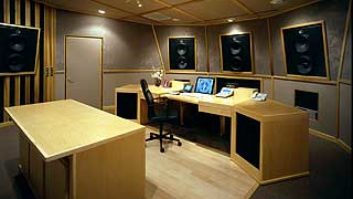
I consider myself both a student and a fan of history. The student part is nothing special; my bachelor’s degree included a history major. The fan part—and I realize that sounds odd; how is one “a fan” of history?—is based simply on the fact that I read. A lot. Fiction and nonfiction, mystery and biography, epic novels and single-topic essays, some of them page-turners and a few of them loaded with footnotes. A lot of what I read, I’ve come to find, has something to do with history.
One of the first things you learn about our recorded history is that the old cliches are true: It is written by the winners, and it tends to repeat itself. But the more you read, the more you realize that there are two threads of history weaving through the past.
The first is what I would call “events-based” history, which explains my momentary obsessions with all things World War II, Shackleton’s expedition on the Endurance, a recap of the Great 1927 Flood, John Wesley Powell’s adventures down the Colorado River, or any of dozens of other moments in time. Lately, I’ve been wrapped up in the story of the Wright Brothers.
The second is what I would call “Big Picture” history, where you’re dealing with Eras and Ages and Epochs. This is where you find Leonard Shlain’s The Alphabet Vs. The Goddess, Walter Isaacson’s biography of Leonardo Da Vinci or, my most recent pickup, Peter Frankopan’s The Silk Roads: A New History of the World. If, as Ben Bradlee once said, newspapers are the first rough draft of history, this is history with perspective, one based on a re-examination of events.
Whenever I’m in the thick of a Big Picture book, I pause and ask myself, “Do you think that the people in the book had any idea of what’s going on?”
Would the young man in 1820s Manchester, on his way to the textile mill for his first day of work, black clouds pouring out of the smokestacks, realize that he was part of an Industrial Revolution? A revolution that would usher in a Mechanical Age that would eventually lead to steam trains, skyscrapers, automobiles, assembly lines and labor unions? Could Gutenberg have ever imagined the emergence of specialized font makers and paper mills and eventually a Kindle reader? I firmly believe that we are at the start of such a time right now. Call it what you want—Digital Age, Computer Age, Electronic Age, Information Age, Global Age, Connected Age—but we’re there, and we should consider ourselves fortunate.
So, as we end 2023 and enter 2024, I wanted to step away from the day-to-day focus on whether to convert your studio to immersive or arguing the merits of 192 kHz delivery, and instead look at a couple of things to be excited about from a Big Picture point of view, from the inside out.
Command and control: Histograms, 3D imaging, motion control. The late, great Mix columnist Stephen St.Croix wrote about mixing visually via gloves and hand motions back in 1992! Be patient. New means are available, and new methods are coming.
Steerable, Individualized Sound: Localized sound is not new, but individualized-localized sound is. Sphere, on our cover this month, claims to be able to direct separate languages and sound sources to blocks of six seats at a time within the 20,000-capacity structure. Though the implementation will take time to finesse, it actually does work. It’s even working in digital signage right now, as you walk down the street.
Networked Sound: We can argue all day about Dante, AVB, Ravenna and AES67, but we haven’t even begun to tap the true potential of networked audio-video systems. This is huge! Apps and Plug-ins: We’ve already come a long way from debating whether a plug-in sounds as good as its hardware counterpart. Now the focus is on “what else can be done?” Check out the review on dynamic grading in this issue, or Duane Wise’s dynamic parametric EQ. Or PSP Audioware. Or iZotope noise removal. Or source separation. These things could not be done in hardware. It’s exciting!
Immersive Sound: It’s easy to get sucked into the debate about whether headphones and binaural are an option or whether people will put speakers in their home, or whether you even like immersive sound as much as stereo. Stop. It’s time to move forward. Some form of immersive sound is in the future, so rather than criticize Dolby or Apple or Sony or declare that “I don’t think immersive will take hold,” know that a change is coming, and it’s a good time to create that change.
Artificial Intelligence: While we worry about machines taking over the world or songs being written by algorithms, the emergence of artificial intelligence is real, and it will be changing our lives in ways we can’t imagine right now. In audio, here and now, it can essentially fill the role of a foolproof assistant, eliminating many of the mundane tasks that clog up the path to creativity. But so much more is coming, and we need to embrace that! Okay, that’s enough for now. I wish you the happiest of holiday seasons, and I leave you with one final thought, something I often say to students and newcomers: “If you like audio and you like technology, it’s an amazing time to be alive!”
—Tom Kenny, Co-Editor






